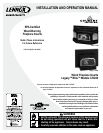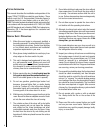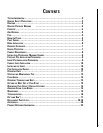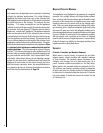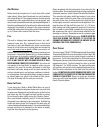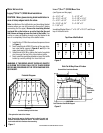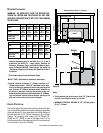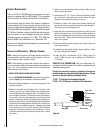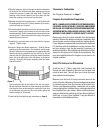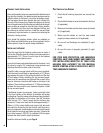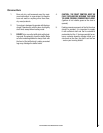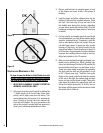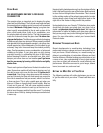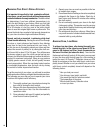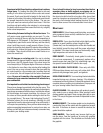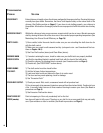
5
Please be patient with the heat output of your stove for the
first few weeks. The steel will go through a curing process that
eliminates moisture, which is deep in the steel and firebrick.
This moisture will reduce initial heat output of your stove
and may make it difficult to start. After you have broken in
the paint on the stove it will be necessary to build hot fires
to thoroughly remove the moisture from the appliance. Run-
ning the stove with the draft fully open for 1 to 1-1/2 hours
after starting and adding generous amounts of fuel during
the first week or two should complete the curing process.
We recommend the use of a thermometer attached to the
stovetop or chimney. Temperatures on the connector pipe
should run in the 250-600 degree range. (DO NOT OVERFIRE
THE STOVE DURING THIS PROCESS. IF THE STOVE OR
CHIMNEY BECOMES RED, REDUCE THE AMOUNT OF AIR
ENTERING THE STOVE IMMEDIATELY).
PainT curing
Your new Legacy™/Elite™ C/E260 is painted with Forest High
Temperature Paint that cures during the first few firings. We
recommend that you put your stove through a regimen of
three burns. The first two should last for 20 minutes each at
250 degrees (the stove should be allowed to cool completely
between each burn). The third should be a burn of at least
450 degrees F. for 45-60 minutes. The paint will become
soft, gummy, and emit non-toxic smoke during these burns.
After the stove cools down for the third time, the paint will
harden. DO NOT BUILD A LARGE ROARING FIRE UNTIL THIS
CURING EFFECT IS COMPLETE OR YOU MAY DAMAGE THE
FINISH OF YOUR STOVE. Spray can touch-ups should be
done only with Forest brand paint, available from a Lennox
Hearth Products dealer.
ash DisPosal
Ashes should be scooped out of a cool stove with a small
metal shovel. Ashes should be placed in a metal container
with a tight fitting lid. The closed container of ashes should
be placed on a non-combustible floor or on the ground, well
away from all combustible materials, pending final disposal. If
the ashes are disposed of by burial in soil or otherwise locally
dispersed, they should be retained in the closed container
until all the cinders have thoroughly cooled. Ashes can ignite
up to 72 hours after removal from the stove.
fuel
This unit is designed and engineered to burn, dry, well-
seasoned wood only. Dry, seasoned wood is that which
has been cut, split, and allowed to dry under a covered area
where air is free to flow and circulate under and around the
wood (not under a tarp or plastic). Make sure wood is not
stacked directly on the ground, it may absorb moisture from
the ground. It should be allowed to dry in these conditions
for a minimum of six months, preferably one year or more.
IT MUST BE UNDERSTOOD THAT WOOD CANNOT BE
LEFT IN ANY KIND OF WET OR DAMP AREA OR IT WILL
NEVER BECOME COMPLETELY SEASONED. Your stove will
not operate at the level that it is meant to unless you use
seasoned, dry wood. Do not burn driftwood or wood that
has been in salt water, doing so will void your warranty. Do
not burn treated wood, coal, garbage, cardboard, solvents,
or colored paper. Burning treated wood, garbage, solvents,
or colored paper may result in the release of toxic fumes.
This type of burning will also void your warranty.
Break-in PerioD
If your stove has a Gold or Nickel-Plated Door, be sure to
clean it with Windex brand glass cleaner and a very soft cloth
to remove any fingerprints and residues prior to the first fire
and before any fire if the gold has been handled or soiled.
Do not close the door tightly during the “Break-in Period.”
Also, open the door frequently (every 5-10 minutes) to keep
the gasket from adhering to the curing paint. Ventilate the
house well during these first firings as the paint gives off
carbon dioxide and unpleasant odors. It is recommended that
persons sensitive to an imbalance in the indoor air quality
avoid the stove during the curing process.



